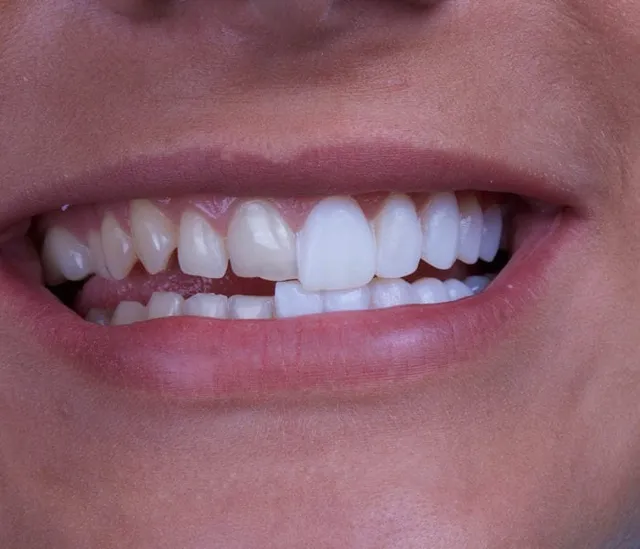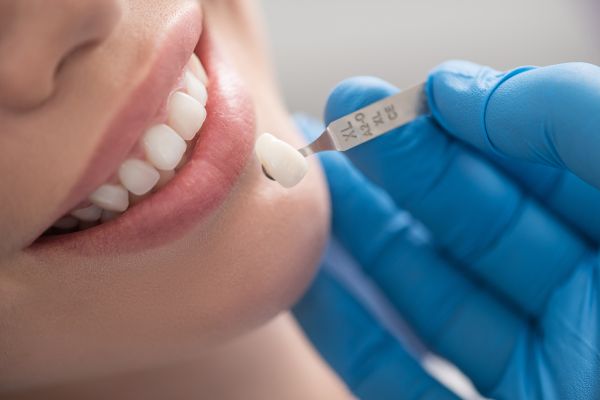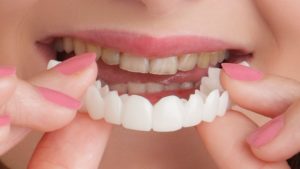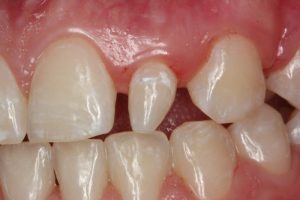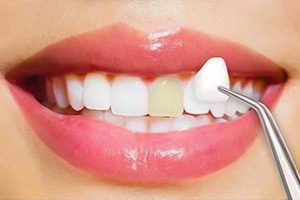My porcelain veneers do not feel smooth on my five upper, front teeth. Basically, when I run my teeth over them, they do not feel slick like my normal teeth. I have gone back to the dentist who did them to have them polished two times. Also, I think they look pasty.
-Carrie from California
Dear Carrie,
Unfortunately, from what you have described it does not sound as if your dentist knows how to polish your porcelain veneers. Another issue could be that he originally used a laboratory that may not have made the most natural-looking veneers.
Many general dentists claim that they can do porcelain veneers. The problem is that they need to look as life-like as possible. It truly takes an “artist” to perfect this technique. That is why there is so much additional training and education to be considered a cosmetic dentist.
Porcelain veneers do not require polish. The process in which they are made when fired in the porcelain oven gives them a glaze. This coating is very stain-resistant and durable. There are occasions where polishing is required when a dentist who is maintaining them does not treat them properly. However, there is also a special polishing toothpaste for veneers. You can try it for the best results as well.
I would recommend consulting with a true cosmetic dentist. They should be able to polish them properly and ultimately give you the natural, beautiful look you are after.
The Anticipation of Silky-Smooth Veneers:
For individuals investing in smooth veneers, the expectation often revolves around achieving a seamlessly smooth surface, mimicking the natural texture of teeth. This expectation is grounded in the desire for a smile that not only looks impeccable but also feels comfortable and natural.
Common Concerns: When Smooth Turns Bumpy:
Despite meticulous planning and skilled craftsmanship, some individuals find themselves facing the unexpected realization that their porcelain veneers do not exhibit the desired smoothness and their back of veneer feels rough. Instead, concerns may arise about uneven surfaces, irregular textures, or an overall rough feel, leading to questions about the root causes of these imperfections.
Potential Reasons for Unsmooth Porcelain Veneers:
- Inadequate Bonding:
Poor bonding between the veneers and the natural teeth can result in uneven surfaces. If the bonding process is not executed meticulously, it may lead to variations in texture.
- Alignment Issues:
Misalignment during the veneer placement can contribute to uneven surfaces. Precise positioning is crucial to achieving a harmonious and smooth transition between the veneers and natural teeth.
- Improper Preparation:
The preparatory phase, where a small layer of enamel is removed from the natural teeth, is critical. Improper preparation can lead to an uneven foundation, impacting the smoothness of the veneers.
- Quality of Materials:
The quality of the porcelain veneers themselves plays a significant role. Inferior materials or suboptimal manufacturing processes may result in inconsistencies in texture.
Navigating the Concerns: A Collaborative Approach:
- Open Communication with the Dentist:
Communication is key. Express concerns about the texture with your dentist, providing specific details about areas of discomfort or unevenness. This dialogue establishes the foundation for addressing the issue collaboratively.
- Comprehensive Examination:
A thorough examination by the dentist is crucial. This may involve diagnostic tools, such as digital imaging or intraoral scans, to pinpoint the exact areas that require attention.
- Potential Adjustments:
Depending on the assessment, adjustments may be possible. This could involve refining the bonding, reevaluating the alignment, or making subtle modifications to the veneers to achieve the desired smoothness.
- Consideration of Refinement Procedures:
In some cases, refinement procedures may be recommended. These can include polishing the veneers or addressing any irregularities in the bonding for a smoother finish.
Patient-Centric Solutions: Empowering a Satisfactory Outcome:
Empowered by open communication and a collaborative approach, individuals experiencing concerns about the smoothness of their porcelain veneers can actively participate in the quest for a satisfactory outcome. Working hand-in-hand with the dentist ensures that refinements align with personal expectations, leading to a smile that not only looks beautiful but feels impeccably smooth.
How Do Veneers Feel?
The sensation and feel of veneers can vary from person to person, and individuals may experience an adjustment period as they get used to the presence of these cosmetic enhancements. Here are some common aspects related to how veneers feel:
- Smooth Texture: Porcelain veneers are designed to have a smooth surface, often mimicking the natural texture of teeth. The initial feel is generally smooth against the tongue and lips.
- Thin Profile: Veneers are thin shells that are custom-made to fit over the front surface of the teeth. Due to their minimal thickness, they typically don’t feel bulky or overly intrusive.
- Comfortable Bite: Properly fitted veneers should not interfere with your bite. Dentists ensure that the veneers are aligned correctly to maintain a comfortable and natural bite.
- Increased Sensitivity: Some individuals may experience temporary increased sensitivity to hot or cold temperatures immediately after getting veneers. This sensitivity is often mild and tends to subside as the mouth adjusts.
- Adjustment Period: It’s normal to have an adjustment period during which you become accustomed to the feel of the veneers. Initially, you may be aware of their presence, but over time, they should feel like a natural part of your teeth.
Let’s Embrace Perfection in Every Smile:
The journey towards a flawless smile often encounters bumps along the way. When porcelain veneers fall short of the anticipated smoothness, it becomes an opportunity for collaboration, communication, and refinement.
Embracing the potential for improvement and working closely with the dentist sets the stage for achieving perfection in every smile, ensuring that the final result not only meets but surpasses expectations.
